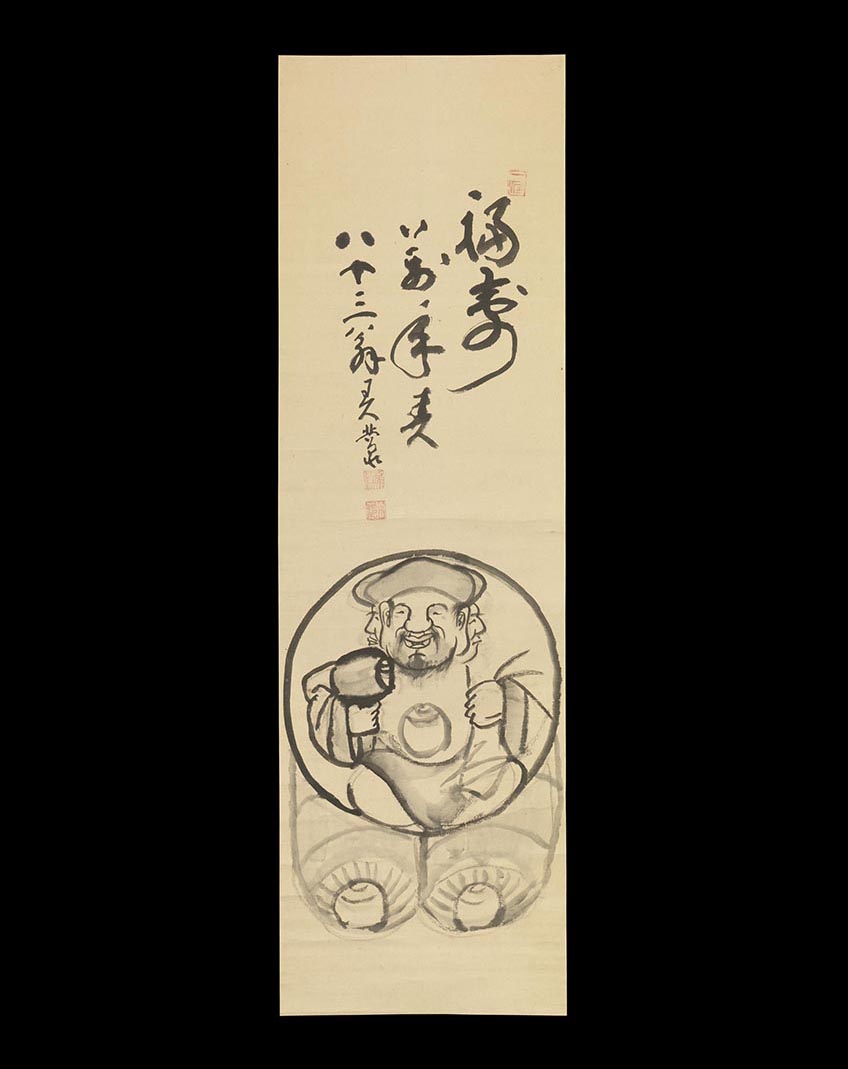Yūrei
Oka Bunto / Paintings
- Contact Us
-
Material
Hanging scroll, ink and color on silk, silk mounting
-
Size
199 (h) x 68.5 cm (230.5 (h) x 86.3 cm)
-
Period
Taishō period (1912-1926)
-
Published
"Supranatural" by Galerie Mingei, 2018 -
Exhibited
Musée du Quai branly-Jacques Chirac, in “Enfers et Fantômes d’Asie” (10th April-15th July, 2018)
Description
Yūrei - Ghost
Oka Buntō (1876-1943)
Signed: Heian Buntō-gaku-hitsu
A yūrei (ghost), whose feet are not depicted, beside a wooden stand on which a kōro (incense burner) holds a stick of burning incense. Even the smoke swaying from the incense is rendered more clearly than the woman herself, who appears as if emerging from the smoke. She is biting her lower lip with her front teeth, and her empty but spiteful eyes are uncanny. Her hair is dishevelled and her pale face doesn’t look like that of a living human being.
The life-sized painting of a ghost or yūrei shown here dates to the early 20th century (circa 1925) and combines the opulence of the Taishō period with a subject matter more commonly represented during the 19th century.
As in the West, Japanese ghosts are thought to be spirits kept from a peaceful afterlife. Murder and suicide are common causes for this, as is the inability to conquer powerful emotions such as love, jealousy, hatred or sorrow. In such cases the ghosts exist on earth until their emotional conflicts can be resolved. It appears that the female ghost represented here is holding onto a love or jealousy that she cannot relinquish. Her tormented expression shows the depth of her suffering, although she is undoubtedly the apparition of a once beautiful lady.
Oka Buntō (real name: Tōzo) (1876-1943). Born in Tango province, Buntō moved to Kyoto and graduated from both the Kyoto City School of Arts and the Kyoto City Specialist School of Painting. He studied mostly under Yamamoto Shunkyo (1871-1933) and worked in the Shijō style. He exhibited at the Bunten in 1912, 1915 and 1916 and won several prizes. Buntō had several stylized seals, kaō. This seal in a shape of a skull might have been designed by Buntō specifically for use on paintings of ghosts. It is very elegant and flamboyant.

